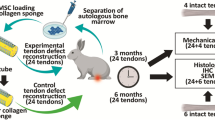Abstract
Surgical treatment in Haglund’s deformity involves removal of the dorsolateral part of the calcaneus up to the insertion of the Achilles tendon and the inflamed retrocalcaneal bursa. Traditionally treated with open surgery, after failure of the conservative treatment, there is increasing interest in a more minimally invasive approach to reduce complications and improve the rate and ease of recovery. The poor results of open surgical treatment may be due to incorrect indication for surgery, incomplete or aggressive bone resection, fibrosis, chronic tendinopathy, painful scars and numbness in the heel. The minimally invasive surgical technique by an endoscopic calcaneoplasty (ECP) could be an option to overcome some of these problems. The endoscopic technique include: patient prone, peripheral anesthesia, standard instruments. We have used the autologous bone marrow-derived mesenchymal cells (MSCs) obtained from iliac crest for severe Achilles tendonosis. The purpose of our study was to describe management of Haglund’s Syndrome, evaluate the effectiveness of a minimally invasive procedure, demonstrating the validity as well in the revisions of the open treatments in athletes. Adequate relief of symptoms is considered to be dependant on removing any osseous irritation to the Achilles insertion (bone resection), fibrolysis and using autologous bone marrow-derived Mesenchymal stem cells (MSCs) for severe Achilles tendonosis.








Similar content being viewed by others
Bibliografia
Haglund P (1928) Beitrag zur Klinik der Achillessehne. Zeitschr Orthop Chir 49:49–58
Heneghan MA, Pavlov H (1984) The Haglund painful heel syndrome. Experimental Investigation of cause and therapeutic implications. Clin Orthop 187:228–234
Jerosch J, Nasef NM (2003) Endoscopic calcaneoplasty—rationale, surgical technique, and early results: a preliminary report. Knee Surg Sports Traumatol Arthrosc 11:190–195
Van Dijk CN, van Dyk E, Scholten PE, Kort NP (2001) Endoscopic calcaneoplasty. Am J Sports Med 29:185–189
Canoso JJ, Liu N, Trail MR et al. (1988) Physiology of the retrocalcaneal bursa. Ann Rheum Dis 47:910–912
Frey C, Rosenberg Z, Shereff MJ et al. (1992) The retrocalcaneal bursa: anatomy and bursography. Foot Ankle 13:203–207
Myerson MS, McGarvey W (1998) Disorders of the insertion of the Achilles tendon and Achilles tendinitis: an instructional course lecture. J Bone Joint Surg 80A:1814–1824
Pavlov H, Heneghan MA, Harsh A et al. (1982) The Haglund’s syndromes: initial and differential diagnosis. Radiology 144:83–88
Ko R, Porter M (2000) Interactive foot and ankle 2. Primal Pictures (CD)
Johannes IW, Aimee CK, Van Dijk CN (2012) Surgical treatment of chronic retrocalcaneal bursitis. Arthroscopy 2:283–2934
DeVries JG, Summerhays B, Guehlstorf DW (2009) Surgical correction of Haglund’s triad using complete detachment and reattachment of the Achilles tendon. J Foot Ankle Surg 48:447–4516
Sella EJ, Caminear DS, McLarney EA (1998) Haglund’s syndrome. J Foot Ankle Surg 2:110–114
Le TA, Joseph PM (1991) Common exostectomies of the rearfoot. Clin Podiatr Med Surg 8:601–6238
Pauker M, Katz K, Yosipovitch Z (1992) Calcaneal osteotomy for Haglund’s disease. J Foot Surg 31:558–589
Jerosch J, Schunck J, Sokkar SH (2007) Endoscopic calcaneoplasty (ECP) as a surgical treatment of Haglund’s syndrome. Knee Surg Sports Traumatol Arthrosc 15:927–934
Ortmann FW, McBryde AM (2007) Endoscopic bony and soft tissue decompression of the retrocalcaneal space for the treatment of Haglund deformity and retrocalcaneal bursitis. Foot Ankle Int 2:149–153
Kannus P, Jozsa L (1991) Histopathological changes preceding spontaneous rupture of a tendon. A controlled study of 891 patients. J Bone Joint Surg Am 73(10):1507–1525
Bruder SP, Jaiswal N, Haynesworth SE (1997) Growth kinetics, self-renewal, and the osteogenic potential of purified human mesenchymal stem cells during extensive subcultivation and following cryopreservation. J Cellular Biochem 64(2):278–294
Pittenger MF, Mackay AM, Beck SC et al. (1999) Multilineage potential of adult human mesenchymal stem cells. Science 284(5411):143–147
Broese M, Toma I, Haasper C et al. (2011) Seeding a human tendon matrix with bone marrow aspirates compared to previously isolated hBMSCs—an in vitro study. Technol Health Care 19(6):469–479
Bain BJ (1996) The bone marrow aspirate of healthy subjects. Br J Haematol 94(1):206–209
Schu S, Nosov M, O’Flynn L et al. (2012) Immunogenicity of allogeneic mesenchymal stem cells. J Cell Mol Med 16:2094–2103
Duffy MM, Pindjakova J, Hanley SA et al. (2011) Mesenchymal stem cell inhibition of T-helper 17 cell differentiation is triggered by cell-cell contact and mediated by prostaglandin E2 via the EP4 receptor. Eur J Immunol(41):2840–2851
Whealands Smith RK, Werling NJ, Dakin SG et al. (2013) Beneficial effects of autologous bone marrow-derived mesenchymal stem cells in naturally occurring tendinopathy. PLOS One 8(9):e75697
Rota A, De Santis P, Rota P (2015) Endoscopic treatment of Haglund’s Syndrome: indications and limits. In: American Academy of Orthopaedic Surgeons, March 24–28, Las Vegas, Nevada (Poster)
Rota A, De Santis P, Rota P (2019) A treatment algorithm for management of Haglund’s syndrome: open and endoscopic surgery. In: 20th European Federation of National Association of Orthopaedics and Traumatology Congress, 5–7 June 2019, Lisbon, Portugal, pp 5–7 (Poster)
Author information
Authors and Affiliations
Corresponding author
Ethics declarations
Conflitto di interesse
Gli autori Attilio Rota, Pierfrancesco De Santis e Pierpaolo Rota dichiarano di non aver alcun conflitto d’interesse.
Consenso informato e conformità agli standard etici
Tutte le procedure descritte nello studio e che hanno coinvolto essere umani sono state attuate in conformità alle norme etiche stabilite dalla dichiarazione di Helsinki del 1975 e successive modifiche. Il consenso informato è stato ottenuto da tutti i pazienti inclusi nello studio.
Human and Animal Rights
L’articolo non contiene alcuno studio eseguito su esseri umani e su animali da parte degli autori.
Rights and permissions
About this article
Cite this article
Rota, A., De Santis, P. & Rota, P. Indicazioni all’utilizzo del concentrato midollare nella chirurgia endoscopica del morbo di Haglund. LO SCALPELLO 33, 311–316 (2019). https://doi.org/10.1007/s11639-019-00333-z
Published:
Issue Date:
DOI: https://doi.org/10.1007/s11639-019-00333-z




